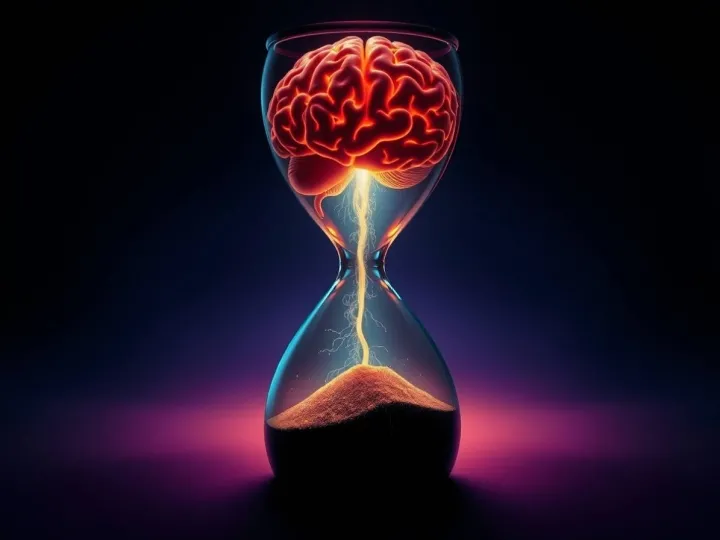For decades, hearing loss has been treated largely as a quality-of-life issue - a matter of convenience and social comfort rather than brain integrity. Yet emerging research has reframed the ear as an early warning sensor for cognitive decline. In one of the most comprehensive analyses to date, Francis B. Kolo and colleagues examined 2,178 participants of the Framingham Heart Study Offspring cohort, tracking how hearing thresholds measured in midlife relate to MRI-based brain structure, neuropsychological performance, and incident dementia over as long as 15 years.
Participants with mild or greater hearing loss had significantly smaller total brain volumes (? 4 cm³ less) and accelerated accumulation of white-matter hyperintensities - small vascular-related lesions often linked to cognitive decline. Over time, these individuals also performed worse on executive-function tests such as the Trail Making Test, showing diminished cognitive flexibility and processing speed.
When the researchers extended the follow-up to 15 years, the signal became even clearer: those with any measurable hearing loss had a 71 percent higher risk of developing dementia. In people carrying at least one copy of the APOE e4 allele - a well-known genetic risk factor for Alzheimer's disease - the risk nearly tripled. Hearing-aid users, however, showed a reduced risk compared with those who left hearing loss untreated, suggesting that sensory correction may help preserve neural function.
The association persisted even after adjusting for vascular risks such as blood pressure, diabetes, and smoking, indicating that hearing loss itself - or the neural consequences of reduced auditory input - may contribute directly to brain degeneration.
Historical context
The link between the ear and the brain has long fascinated neurologists. As early as the 1940s, autopsy studies revealed cortical reorganization following deafness. By the 1980s, neuroimaging showed that regions normally dedicated to sound processing began to repurpose themselves for vision and touch after prolonged hearing loss - a phenomenon known as cross-modal plasticity. Initially seen as adaptive, this rewiring may exact a cost: when auditory information returns (for example through a hearing aid), the reorganized cortex must relearn how to filter and prioritize sound.
Large epidemiological cohorts later cemented the connection between hearing and cognition. The Baltimore Longitudinal Study of Aging (2011) reported that older adults with hearing loss had a 30 - 40 percent faster rate of cognitive decline. The Lancet Commission on Dementia Prevention later identified hearing loss as the single largest potentially modifiable risk factor, accounting for nearly 8 percent of new dementia cases globally - more than hypertension, smoking, or depression combined.
The new Framingham data extend that evidence by coupling audiometry with high-resolution MRI and genetic analysis. The authors found not only smaller total brain and hippocampal volumes in hearing-impaired individuals but also a linear association between increasing auditory thresholds and greater white-matter lesion load, implying a shared pathway between sensory and vascular aging.
Mechanisms and meaning
How might the loss of hearing erode cognition? Several hypotheses converge. Reduced auditory input may increase cognitive load: when the brain strains to decode faint or distorted speech, fewer resources remain for memory and reasoning. Chronic auditory deprivation might also diminish stimulation of the temporal and parietal cortices, leading to atrophy from disuse. Another line of thought points to microvascular disease affecting both cochlear and cerebral vessels. The Framingham team's finding of increased white-matter hyperintensity volume supports this vascular-coupling theory.
The genetic interaction adds another layer. APOE e4 carriers already experience less efficient lipid transport and neuronal repair; diminished sensory input may accelerate degeneration in such vulnerable networks. Yet the observation that hearing-aid use mitigated risk suggests that active engagement - through amplification and communication - helps preserve neural integrity by maintaining environmental feedback loops.
Beyond correlation: the DSA perspective
From the standpoint of Seven Reflections' Dimensional Systems Architecture (DSA), the auditory system acts as a gateway of coherence between external field information and internal cognitive structure. Hearing translates wave-based energy patterns into organized neural codes, effectively synchronizing the organism's perception of time and rhythm. When this input weakens, the field interface (L4 plane) loses harmonic feedback, and the structural brain (T - 4 plane) begins to drift out of resonance.
The observed shrinkage in gray matter and the rise in white-matter hyperintensities can therefore be interpreted as a physical expression of lost field coherence. The brain's attempt to compensate - by reallocating attention and working memory resources - leads to sustained cognitive load and eventually fatigue of executive systems. In DSA terms, untreated hearing loss increases Cognitive Field Friction (CFF), a condition where the flow of perceptual information becomes turbulent rather than smooth, eroding integration across sensory and cognitive domains.
Intervention - whether via hearing aids or richer auditory environments - restores resonance. The DSA model would predict that early correction re-stabilizes the brain's oscillatory baseline, preventing long-term structural fragmentation. Thus, the biological and the field-based explanations converge: sound literally keeps the mind in tune.
The implications are profound. Hearing screening in midlife may one day serve not just as preventive care but as a neurological diagnostic tool. Detecting subtle auditory decline could flag early brain changes long before memory falters. For millions worldwide, preserving hearing may be one of the simplest and most human ways to protect the brain.






